Senior Driving
Assuming you're lucky enough to still have roads to where you'd like to visit, seniors need to be aware of the risks of operating motor vehicles. Most seniors are aware that driving becomes increasingly hazardous as they age, and in fact, those over 65 are more likely to consider elderly drivers more dangerous than drunk drivers. Interestingly, 40% of adults are more comfortable talking with their parents about funeral arrangments than restricting their parents' driving.
All of these effects of aging diminish your ability to drive safely:
- Visual acuity declines
- Reduced peripheral vision
- Reduced night vision
- Hearing loss
- Longer reaction times, cognitive slowing
- Reduced coordination
- Reduced physical strength
- Joint (e.g. neck) rigidity or pain
- Medications
- Increased vulnerability when accidents happen
While physiological issues stack up against senior drivers, most are well aware of this and drive accordingly:
Older drivers no more dangerous, accident data study says
older drivers compensate for their declining powers by driving more carefully, slowing down, leaving larger gaps, and choosing better weather and quieter times to go out in the car.
What Risks Do Older Drivers Pose to Traffic Safety?
One of the main reasons that older drivers are not found to be significantly riskier drivers, despite medical evidence that demonstrates that their driving skill declines with age, is that they change their driving habits to compensate for their diminished competence as drivers.
https://seniordriving.aaa.com/resources ... -research/
- Per mile traveled, fatal crash rates increase beginning at age 75 and rise sharply after age 80. This is mainly due to increased risk of injury and medical complications, rather than an increased tendency to get into crashes.
- Since older drivers are more fragile, their fatality rates are 17 times higher than those of 25- to 64-year-olds.
The major problem is not their driving, but the physical frailty of seniors when accidents happen, especially 70+. Nearly 70% of traffic deaths in 2018 were a 65+ driver and/or their 65+ passenger.
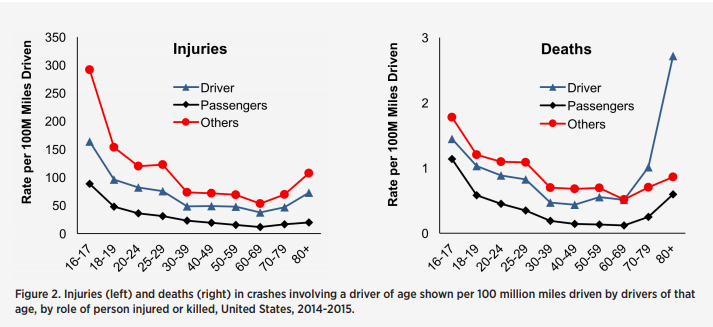
- CrashInjuriesDeathByAge.png (58.65 KiB) Viewed 798 times
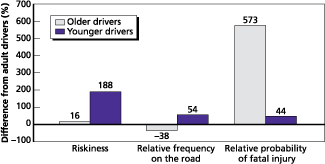
- OlderDriverFatalInjury.gif (5.29 KiB) Viewed 800 times
Senior Driving Skills Improvement
The AAA offers good information on senior driving, and even (during non-COVID times) a Senior Driver Improvement Course. Please takes a look at the following link at your leisure.
https://seniordriving.aaa.com/
https://seniordriving.aaa.com/improve-y ... ng-skills/
So, we older drivers are off the hook as far as causing crashes goes! All studies that I could find involve on-road traffic, not off-road.
I personally feel much more relaxed driving off-road than in traffic. There's usually little to no oncoming or cross traffic and no road signs. You primarily maintain your distance if there's a guy in front of you, watch your GPS map for turns, check where folks are via APRS, engage in some radio banter, and enjoy the distractingly beautiful scenery.
Off-Road Driving Training
However, there are good classes you can take to improve your off-road driving skills.
Since Tom's not here, I can pitch his off-road training classes:
Badlands Off-Road Adventures
Daughter driving Anza Borrego; has taken Tom’s off-road driving class.
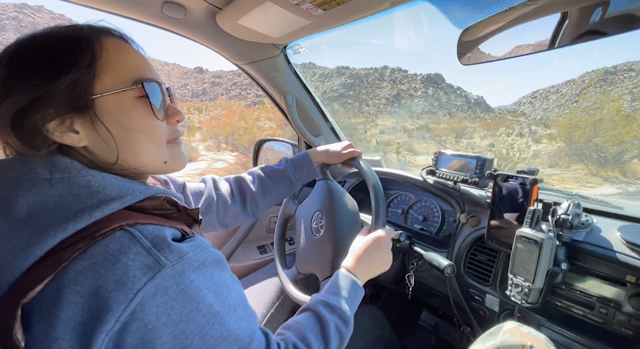
- 02609886-6503-4A5E-B2FB-121BB72B4D57.png (448.22 KiB) Viewed 761 times
As a senior, with years of experience driving and awareness of your limitations, you're probably driving safely. However, the consequence of any error is vastly greater, so be extra safe!
A Pet Peeve, Moreso Now that I'm Older
"Conservation" bills are being pushed through Congress:
Democratic-led House makes conservation push with lands bill
Biden commits to ambitious 30x30 conservation target
Biden has set a goal of conserving at least 30% of U.S. lands and ocean by 2030, a move that supporters say will help curb global warming while preserving some of the nation’s most scenic lands for future generations of Americans to enjoy.
To reach the 30 by 30 target [30% more wilderness by 2030] will require conserving an additional area twice the size of Texas, more than 440 million acres, within the next 10 years.
Sounds good, doesn't it?
For seniors, often the only way of getting deeply into and enjoying scenic areas is driving, usually 4WD vehicles. We're not likely to be humping backpacks. In my opinion, the expansion of wilderness areas is some of the worst outdoor-related legislation for senior campers and hunters.
The
Wilderness Act not only prohibits motorized vehicles, but also prohibits bicycles and carts. Designating lands as wilderness effectively prohibits seniors safe access to once-accessible public lands.
In California, of the 42 million acres of public land, 15 million acres are designated as wilderness, and effectively off-limits to me.
For example, here's an area of Inyo National Forest that contains California deer hunting zone X10. I was happy to get a deer tag a couple of years ago as there seemed areas that weren't too high in altitude or too steep for this old man, and it had good road coverage. But then I brought up a wilderness overlay and found that the vast majority of this zone was wilderness.
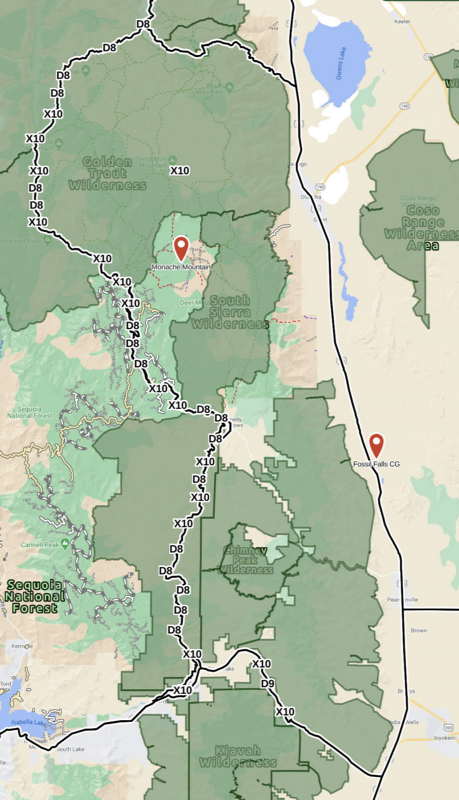
- X10800.png (459.59 KiB) Viewed 866 times
You'd think that new wilderness areas simply preserve existing pristine natural land, but in many cases they
revert land that was once accessible to all.
Here's a map of the major non-wilderness part of X10. It appears that there are many through roads, though the official USFS road map shows many roads deadending.
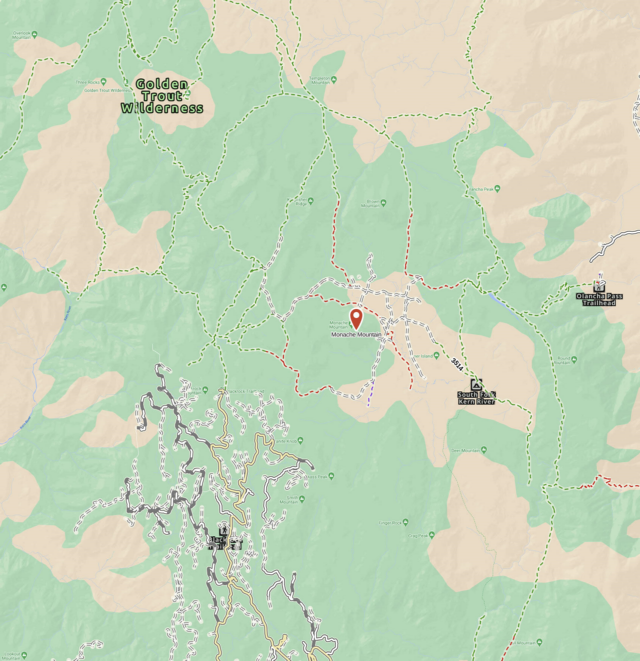
- ApparentRoads640.png (474.13 KiB) Viewed 867 times
Loading a wilderness overlay shows why. Many roads have been here for perhaps a hundred or more years, but are now called wilderness and are gated or legally prohibited to access.
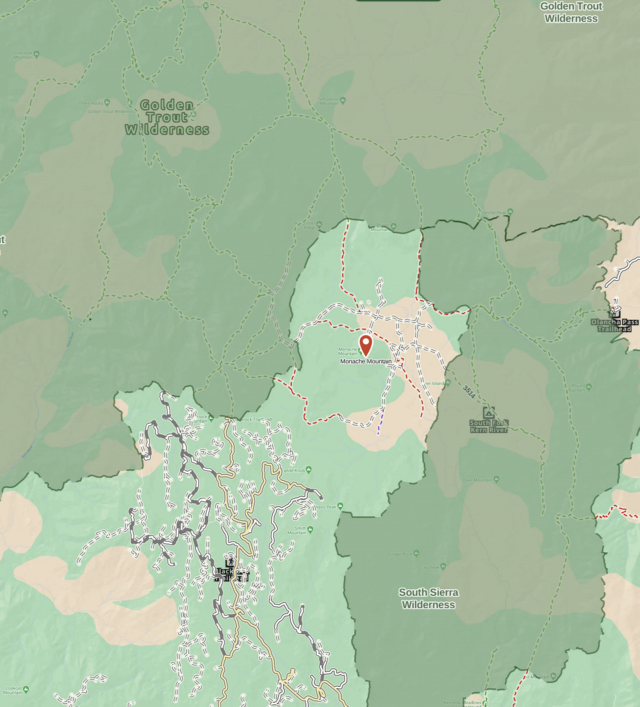
- ActualRoads640.png (456.36 KiB) Viewed 867 times
I've been called "selfish" for wondering how many people really get to enjoy some of these wilderness areas and wanting to maintain my own access to public lands
Back in 2012:
Congress Considering Bill to Allow Motorized Vehicles in Wilderness Areas
A new bill making its way through Congress, the Recreational Fishing and Hunting Heritage and Opportunities Act (H.R. 2834), aims to make federally managed public lands across millions of acres of Forest Service and Bureau of Land Management property more accessible to hunters and anglers. And a key element of the bill calls for allowing motorized vehicles and equipment—as long as they are used for hunting or fishing—into these areas.
While I personally would extend this legislation to seniors, needless to say, it didn't pass.